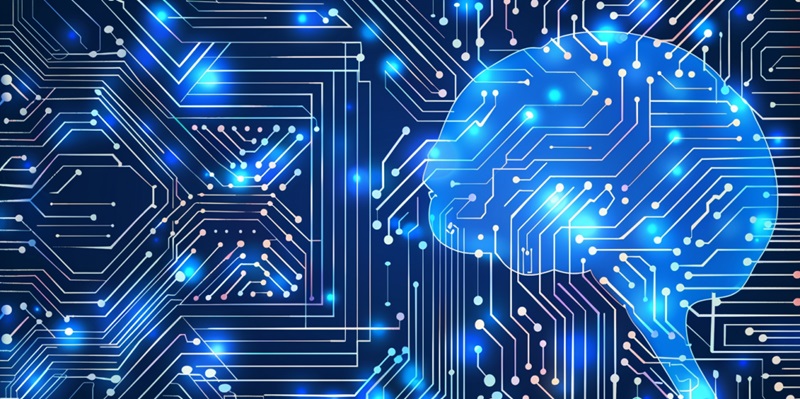Microsoft’s Build 2024 event has been a defining moment for the tech community, signaling a pivotal shift in how artificial intelligence (AI) is envisioned to play a role in our daily computing experiences. Moving away from the centralized dominance of cloud computing, the tech giant emphasized an industry trend toward embedding AI capabilities directly into local devices, such as PCs and laptops. This strategic turn suggests a future where users’ devices are not only tools for productivity but also intelligent companions capable of processing complex AI algorithms locally, potentially transforming every aspect of how we interact with technology.
The Strategic Shift: AI at the Forefront of Microsoft’s Vision
Microsoft’s vision for the future of AI was cast into the spotlight during Build 2024, with its CEO Satya Nadella and other key executives vividly painting a new direction for the company. This vision marked a departure from their earlier mantra: “the intelligent cloud and the intelligent edge.” Instead, Microsoft now champions a more AI-centric approach, promising to embed intelligence directly within the user’s own hardware. Azure CTO Mark Russinovich provided insights into the hardware advancements making this possible, highlighting significant steps in evolving AI from a distant, cloud-reliant concept to an intimate, locally accessible feature.
The rationale behind this strategic pivot resonates with pressing industry concerns around privacy, efficiency, and resource allocation. As modern computing demands increase exponentially, it becomes vital to seek new ways to achieve higher performance without over-relying on cloud infrastructures, which often come with substantial energy and cooling footprints.
Unveiling Copilot+ PCs: Empowering Devices with AI
The Build 2024 event saw the introduction of a groundbreaking innovation: Copilot+ PCs. These devices, equipped with neural processing units (NPUs), represent a force multiplier for local computing, bringing AI inference capabilities right to the user’s fingertips. This development stands to alleviate some of the longstanding issues associated with the cloud-first AI paradigm, like the significant power and cooling overheads mentioned earlier. The power to run complex AI inferences is transitioning from a remote necessity to a localized convenience, at the same time enhancing the user’s control over data privacy, as sensitive functions can be processed directly on the device without uploading data to the cloud.
This technology has the potential to redefine not only how AI is leveraged in computer operations but also how it is perceived by users. No longer reliant on a strong network connection to access intelligent features, Copilot+ PCs exemplify a leap toward true computational autonomy, where device-based AI processing becomes synonymous with modern computing.
Introducing the Windows Copilot Runtime and Library
At the core of Microsoft’s AI infusion into user devices is the new Windows Copilot Runtime, a robust suite of endpoint-hosted AI services that amalgamates over 40 machine learning models and development libraries into a unified platform. This development moves beyond mere language processing to span a broad range of applications, enhancing capabilities in video, image processing, and other functionalities deeply integrated into Windows, like Studio effects.
Developers are being handed a vital toolkit through the Windows Copilot Library and APIs, unlocking the door to a myriad of local AI applications. The on-device small language model, known as Phi Silica, which is designed specifically for NPU usage, is a testament to Microsoft’s commitment to fostering a rich developer ecosystem for localized AI, giving developers the power to harness potent on-device machine learning models.
Localized AI: Bridging the Gap Between Cloud and Edge
The Build 2024 event illustrated Microsoft’s philosophical shift in AI deployment, providing developers with the freedom to choose between local AI models and cloud-based services such as ChatGPT. This choice is not merely a technical one; it entails considerations about available resources, privacy concerns, cost considerations, and the desire for controlled and predictable AI usage costs. This strategic move also hints at a broader industry trend toward a hybrid AI ecosystem where the flexibility of cloud and edge-based AI solutions can be blended to suit specific use cases. This shift is a major stride forward in the robustness and flexibility of AI applications, aiming to enhance user experiences while retaining mindful management of cloud infrastructure demands.
The Future of AI-Infused Windows Applications
Microsoft’s commitment to AI is set to continue with an update to the Windows App SDK slated for June 2024. This integration is expected to streamline the development of AI-powered desktop applications, directly weaving AI capabilities into the fabric of Windows. Such developments underscore a recognition that the future of computing is closely tied to advancements in natural language and semantic computing, changing the way users will interact with software.
Tools for Building the Next Generation of Windows AI
Microsoft’s Build 2024 event marked a significant turning point for the tech world, highlighting a decisive shift in the role of artificial intelligence (AI) in our everyday tech use. The company steered attention away from the prevailing cloud computing model, advocating instead for a move towards integrating AI functionalities directly into personal devices like computers and laptops. This strategic pivot points to a future where our gadgets will do more than facilitate productivity; they will become smart partners capable of independently handling advanced AI tasks on-site. This approach could revolutionize our interaction with technology, making devices more autonomous and personalized. The advent of such a change opens the door to a new era where the user-device relationship is greatly enriched, laying the groundwork for substantial advancements in user experience and technological integration into daily life.

